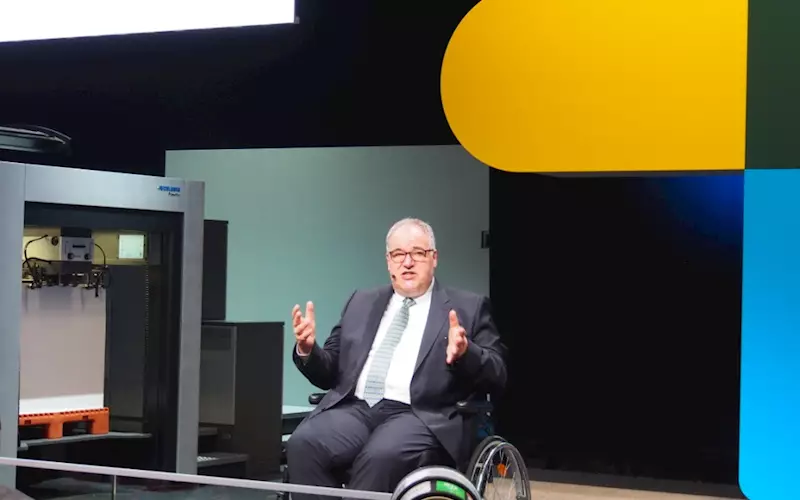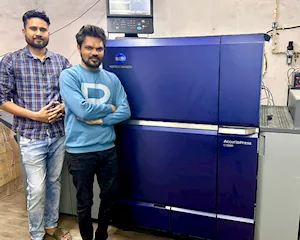Heidelberg has unveiled its Push-to-Stop philosophy of autonomous machine operation wherein the processes which were actively started by the operator will be handled by the press, while the operator will only interrupt the autonomously running process chain if necessary.
“This raises the effectiveness of print production to previously unattainable levels, enables better planning of processes, and continuous process monitoring lowers the error rate,” explained Stephan Plenz, Heidelberg management board member for equipment.
Heidelberg is showing the Push-to-Stop concept on two Speedmaster XL 106 presses in Hall 1 – a six-colour with double coater, and an eight-colour perfector.
The approach will free operators from the burden of routine tasks and to support them with intelligent systems so that they can transform the technical potential of their machines into higher net productivity.
Presenting “the new Heidelberg” Heidelberg CEO Gerold Linzbach, said, “We’ve set the course for growth and sustainable profitability, and are expecting the trade show to take us further along this path. Serving the largest number of industrial print shops in the sector, our comprehensive digital and service concepts focus on customer benefits as we enter the digital age.”
“Whereas today the operator must actively start processes on the machine, in future the machine will, wherever possible, do this itself,” explained Stephan Plenz, Heidelberg board member for equipment, who likened the technology to autonomous driving systems.
Drupa also marks the worldwide premiere of Primefire 106 seven-colour B1 sheetfed inkjet press boasting 2,500sph, 1,200dpi, developed jointly with Fujifilm.
The company also unveiled Heidelberg Cloud, a cloud-based service platform that uses “big data and adds intelligence to it to make it smart data”. This ‘smart data’ collected from over 10,000 networked presses worldwide will enable optimised decision-making for scheduling preventive maintenance before problems actually develop.














 See All
See All